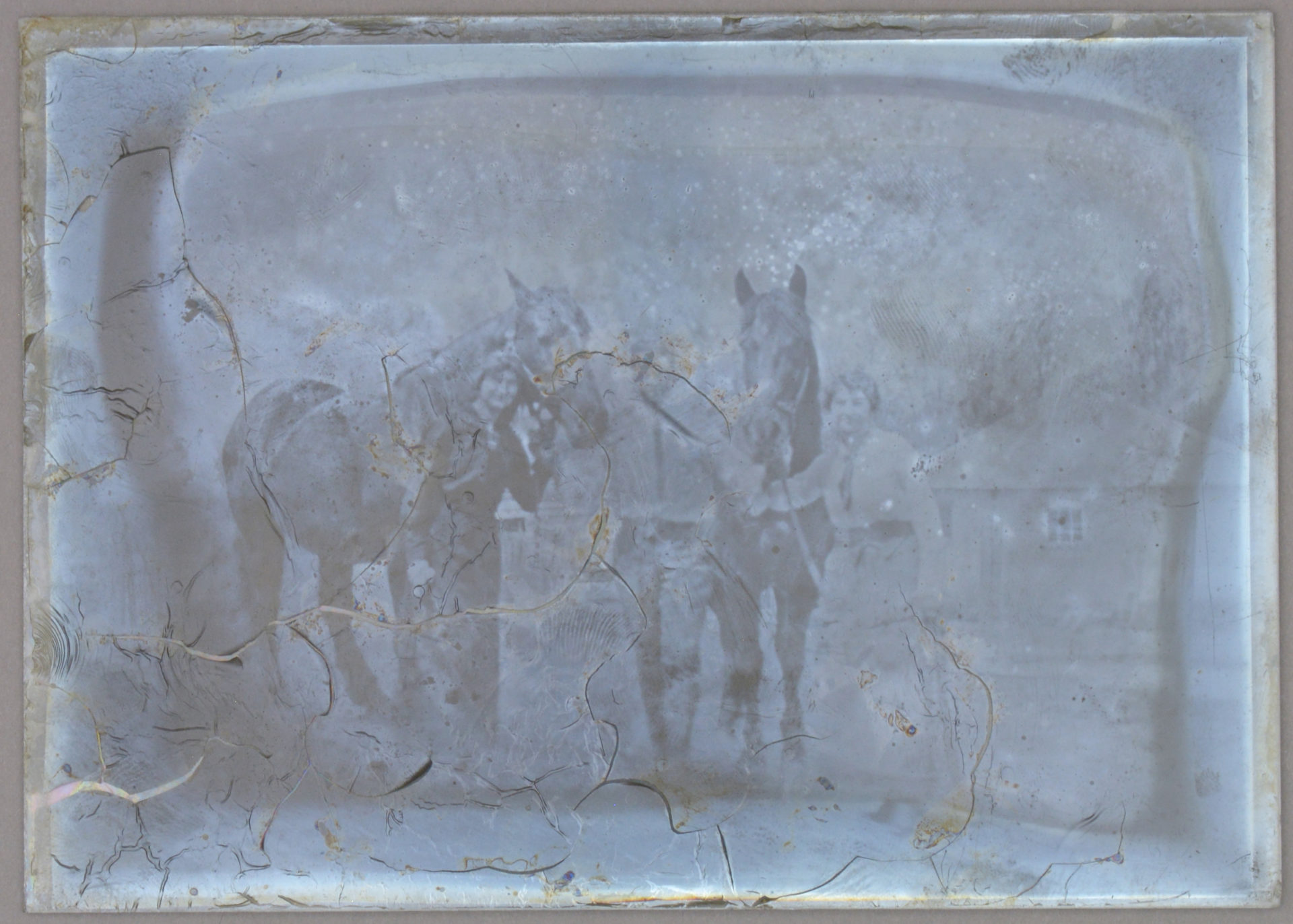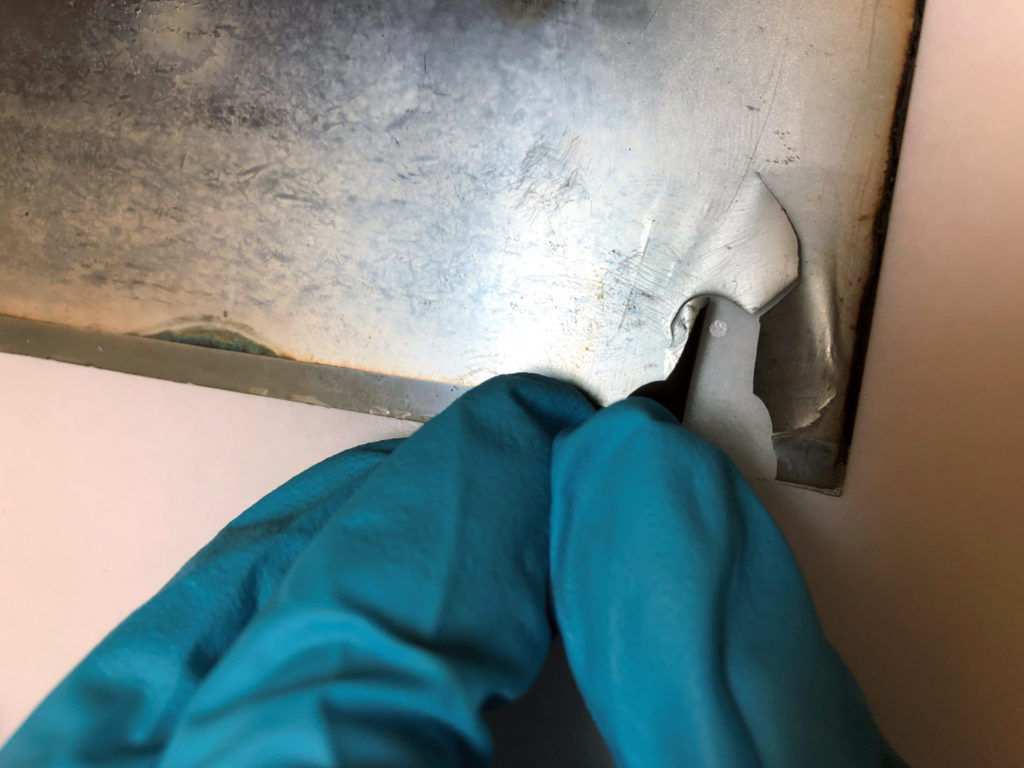
Purchase Tickets
Solutions for a Sticky Problem, Part 2
January 8, 2021

As I wrote in Part 1, I recently learned about a clever conservation technique that turned out to be the solution to a complicated treatment problem I’ve been mulling over. Conservator Elsa Thyss at The Metropolitan Museum of Art developed a method for consolidating severely flaking emulsion on glass plate negatives using minimal moisture, which I was able to successfully adapt for damaged plates in our Bretzman collection. It’s important to address lifting and flaking emulsion on glass plate negatives as soon as possible, before they are handled by researchers or scanned by digitization staff, since the flakes can be easily brushed away and the image lost forever.
The image layer on these glass plates is an emulsion of light-sensitive silver particles dispersed in gelatin. Traditionally, a warm liquid gelatin solution is used to repair flaking emulsion; when applied to a paper-based photographic print, the paper absorbs some of the water in the solution and leaves behind just enough gelatin for the emulsion to stick. But glass is less absorbent and applying warm gelatin to these plates can cause the emulsion to curl and wrinkle when it encounters the liquid. This distortion is less of an issue for very small flakes at the edges of a plate, but when you have large sheet of emulsion lifting away – as was the case for many of the Bretzman negatives – reducing the moisture provides more satisfying results.
Following Elsa’s instructions, I prepared photo-grade gelatin in filtered water and brushed it onto silicone-coated paper. The next day, I was peeled a very thin film of dried gelatin off the paper and, using a Japanese push drill, created tiny, uniform dots of film. I maneuvered the dots under the lifting flaps of emulsion and applied a drop of alcohol-water solution on top of each dot, allowing it to swell the gelatin film for a moment before pressing the flap down and leaving it weighted overnight.

Fine-tipped tools were used to position the 1.5mm dots of gelatin under the lifting emulsion.
While the dots do leave a slight bump in the emulsion, they don’t inhibit viewing and won’t be noticeable when the images are scanned. The advantage of this system is that there is only a disruption in the emulsion at the dot of film, rather than disruption that would happen if wet gelatin were applied under the whole flap. The result is not a perfectly smooth surface, but the plate is stable, and the images are now intact, able to be viewed and enjoyed safely.










